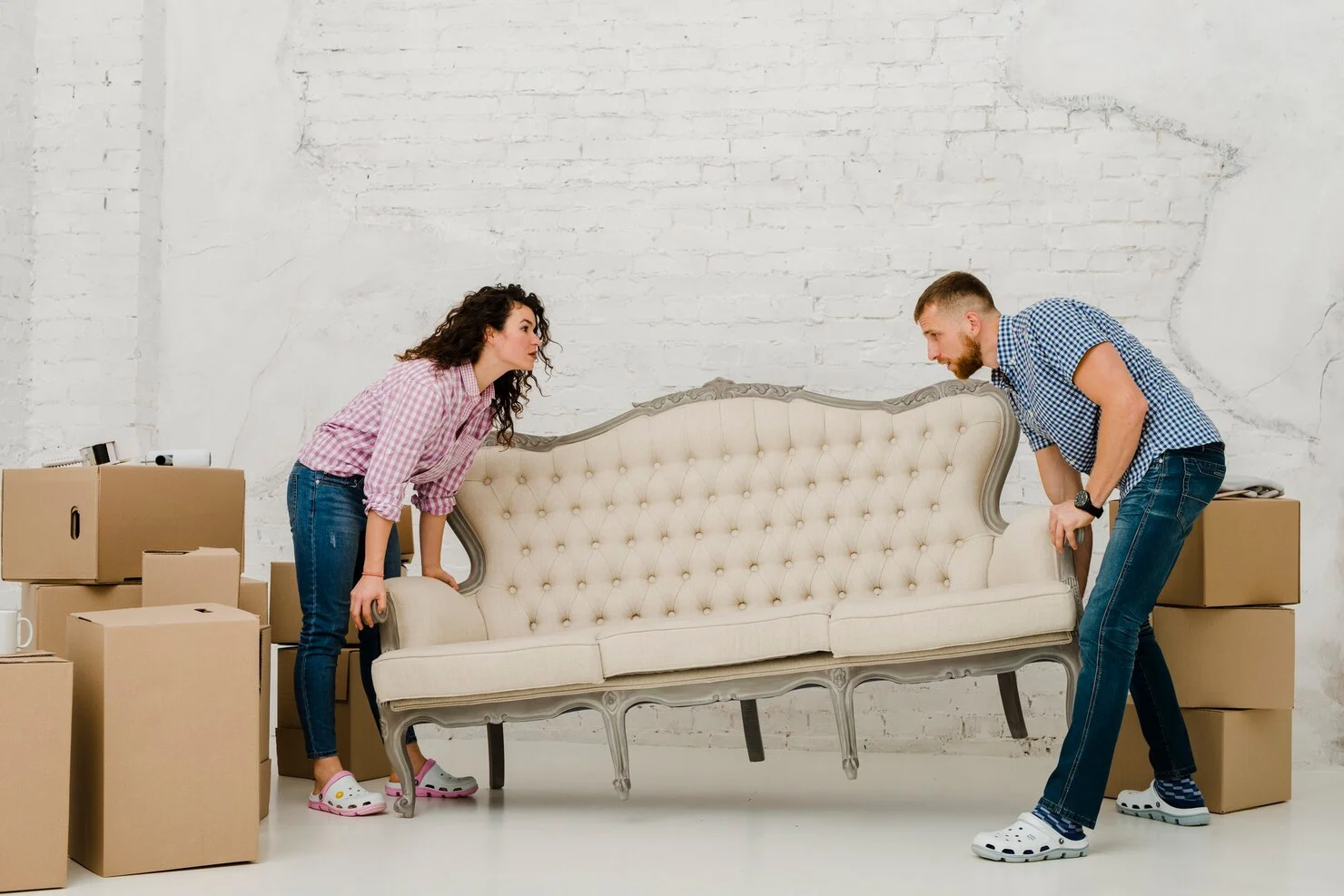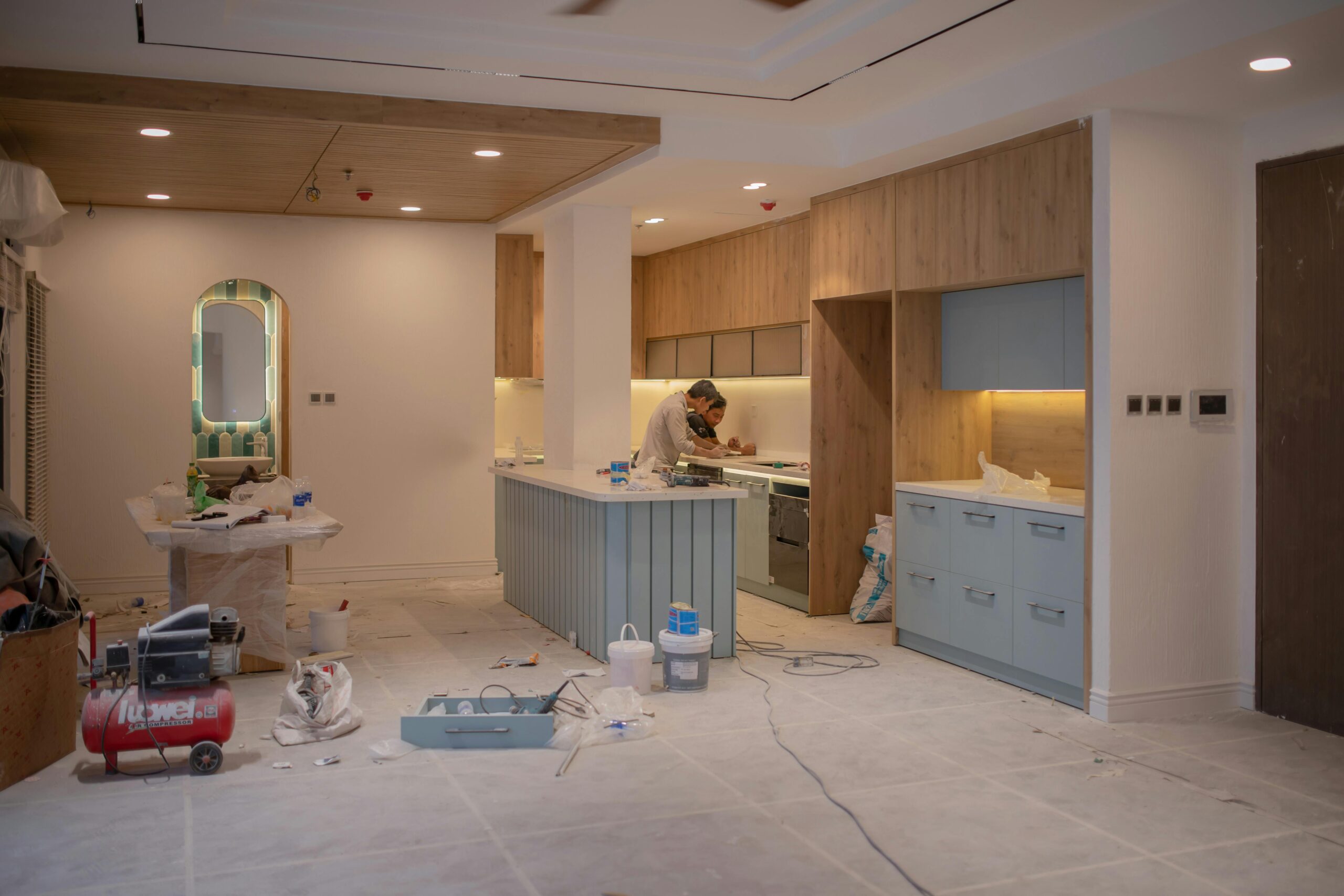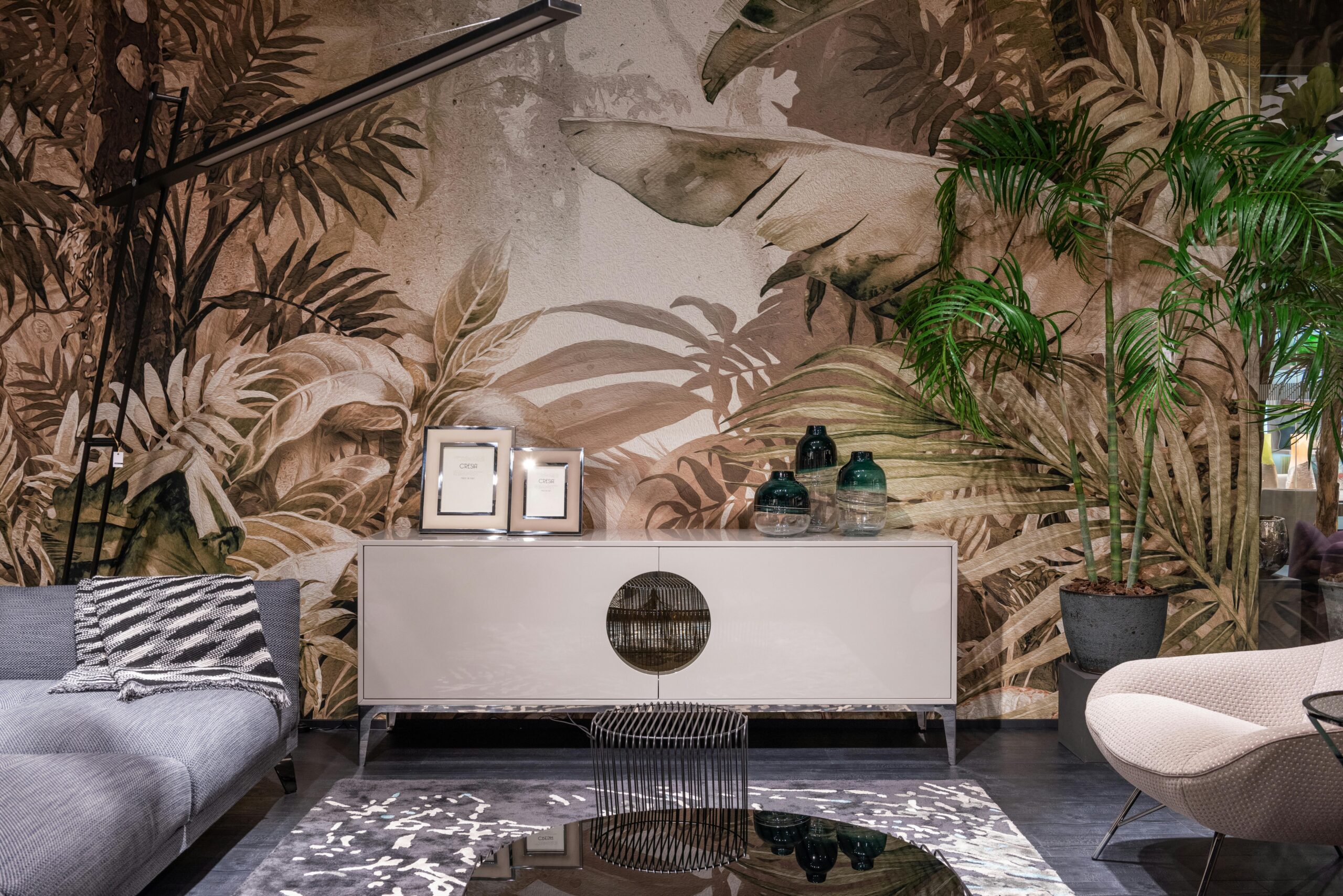HOME IMPROVEMENT
How To Disassemble Furniture in 6 Easy Steps for a Smooth Move to Oxnard

Moving to Oxnard can be exciting, but disassembling furniture can be daunting. Breaking down large pieces makes them easier to transport and protects them from damage during the move. With the right approach, you can disassemble your furniture in six simple steps, saving time and ensuring a smoother transition to your new home.
Proper preparation is key to successful furniture disassembly. Gather necessary tools like screwdrivers, wrenches, and Allen keys before starting. Take photos of assembled pieces and label components to simplify reassembly later. This organized approach will streamline the process and reduce stress on moving days.
Moving companies in Oxnard can assist with furniture disassembly, but tackling it yourself can save money and give you more control over your possessions. By following a step-by-step guide, you’ll be able to confidently take apart your furniture and prepare for a successful move to your new Oxnard home.
Key Takeaways
- Proper preparation and tool gathering simplify furniture disassembly
- Labeling components and taking photos aids in reassembly
- Step-by-step disassembly ensures a smoother, more organized move
Preparing to Disassemble Your Furniture
Proper preparation is key to efficiently disassembling furniture for a move. Taking time to plan and gather supplies will streamline the process and protect your belongings.
Evaluate Your Furniture and Moving Needs
Begin by assessing which pieces of furniture need to be disassembled. Large items like beds, tables, and wardrobes often require taking apart. Measure doorways, stairs, and hallways in both the current and new homes.
Compare these measurements to furniture dimensions. This helps determine which items must be disassembled to fit through tight spaces. Consider the size of the moving truck as well.
Take photos of assembled furniture from multiple angles. These will serve as references when reassembling at the new location.
Gather Necessary Tools and Packing Supplies
Collect essential tools for furniture disassembly:
- Screwdrivers (flathead and Phillips)
- Allen wrenches
- Pliers
- Adjustable wrench
- Hammer
- Furniture dolly
Prepare packing materials:
- Bubble wrap
- Packing tape
- Moving blankets
- Plastic bags for hardware
- Labels and markers
Having these items ready saves time and prevents damage during the disassembly process. Organize tools and supplies in an easily accessible location.
Create a Disassembly Plan
Develop a step-by-step plan for each piece of furniture. Start with the most complex items first. Allocate enough time for each piece to avoid rushing.
Create a labeling system for parts and hardware. Use plastic bags to store screws, bolts, and small components. Label each bag clearly with the furniture name and part description.
Make a checklist of furniture to be disassembled. Include the estimated time for each piece. This helps track progress and ensures nothing is overlooked.
Consider the order of disassembly based on room priority and moving truck loading sequence. Plan to disassemble items closest to exits last for easier transport.
Executing the Disassembly
Disassembling furniture requires careful planning and execution. Following proper procedures ensures a smooth process and prevents damage to your belongings.
Follow Detailed Furniture Assembly Instructions
Start by locating the furniture assembly instructions. These guides often include disassembly steps as well. If you can’t find the original manual, search online for your specific furniture model.
Pay close attention to any diagrams or illustrations provided. They can offer valuable insights into how pieces fit together and should come apart.
Begin with larger, more visible components before moving to smaller, hidden parts. This approach helps maintain a clear understanding of the furniture’s structure throughout the process.
Keep track of the order in which you remove pieces. This will prove invaluable when reassembling the furniture in your new Oxnard home.
Organize and Store Nuts, Bolts, and Screws
As you disassemble each piece of furniture, carefully collect all hardware. Use small Ziploc bags to store nuts, bolts, screws, and other fasteners.
Label each bag clearly with the furniture name and specific part. For example: “Dining Table – Leg Bolts” or “Bookshelf – Shelf Supports”.
Consider taping these bags directly to the furniture pieces they belong to. This ensures you won’t lose track of essential hardware during the move.
For furniture with multiple similar parts, number them as you remove them. This step will save time and frustration during reassembly.
Proper Handling to Avoid Personal Injuries
Prioritize safety throughout the disassembly process. Wear protective gear such as gloves and safety glasses to prevent injuries from sharp edges or flying debris.
Use proper lifting techniques when handling heavy furniture parts. Bend at the knees, keep your back straight, and lift with your legs to avoid strain.
Clear your work area of tripping hazards. Ensure you have enough space to maneuver large pieces without risking injury to yourself or damage to your surroundings.
Take frequent breaks to avoid fatigue, which can lead to accidents. Stay hydrated and don’t rush the process.
Collaborating with Professionals or Friends
For complex or heavy furniture, consider enlisting help. Professional movers have experience disassembling a wide variety of furniture types.
If hiring professionals isn’t an option, ask friends or family for assistance. Extra hands can make the job safer and more efficient.
Assign specific tasks to each person involved. One person might focus on removing screws while another carefully separates wooden components.
Communicate clearly throughout the process. Ensure everyone understands the plan and their role in executing it safely.
When working with others, establish a system for organizing and labeling disassembled parts. This collaborative approach will streamline both the disassembly and reassembly processes.
Conclusion
Disassembling furniture is a crucial step for a smooth move to Oxnard. By following the six steps outlined in this guide, you can safely take apart your furniture pieces. Proper preparation, the right tools, and careful labeling will ensure successful reassembly at your new home.
Remember to work methodically and keep all components organized. With these techniques, you’ll be well-equipped to handle your furniture disassembly and make your move to Oxnard much more manageable.
HOME IMPROVEMENT
Common Thermador Appliance Issues and How Prime Fix Repairs Them in San Francisco

Thermador is a top-tier brand that offers a wide range of luxury kitchen appliances, including refrigerators, ovens, cooktops, dishwashers, and more. Their products are known for being durable, high-quality, and designed to deliver professional-grade performance. However, like all appliances, Thermador products can experience occasional issues that need expert attention. If you’re facing any trouble with your Thermador appliances, Prime Fix Appliances Repair offers fast and reliable solutions in San Francisco and the surrounding Bay Area.
At Prime Fix, we specialize in Thermador appliance repair, offering services that help you get your appliances back in top shape. Whether it’s a refrigerator that’s not cooling properly, an oven that won’t heat, or a dishwasher leaking water, we have the expertise to handle it all. In this article, we’ll cover some of the most common Thermador appliance issues and explain how Prime Fix addresses them to restore your kitchen equipment to optimal performance. You can learn more about the range of services at https://prime-fix.com/brands/thermador/.
Common Thermador Appliance Problems
Even though Thermador appliances are designed for durability, they can experience a variety of issues due to normal wear and tear. These issues can disrupt your kitchen routine, but with professional help, they can be resolved quickly and efficiently. Here are some of the most common Thermador appliance problems and how we at Prime Fix tackle them.
Thermador Oven and Cooktop Not Heating Properly
One of the most common issues with Thermador ovens and cooktops is problems with heating. This issue can affect both gas and electric models. If your oven isn’t heating to the desired temperature, or your cooktop isn’t igniting properly, it can be frustrating, especially when you’re trying to prepare meals for your family.
At Prime Fix, we understand the importance of a fully functioning oven and cooktop in your kitchen. The problem could be due to several reasons, including faulty heating elements, broken ignitors, or a malfunctioning thermostat. Our team of experts will quickly diagnose the issue and get your Thermador oven or cooktop working like new.
Thermador Refrigerator Not Cooling or Inconsistent Temperatures
A refrigerator that isn’t cooling properly is more than just a minor inconvenience. It can cause your food to spoil, which may result in costly waste. If your Thermador refrigerator is experiencing temperature fluctuations or isn’t cooling at all, you need to address the issue as soon as possible.
The problem could be caused by several factors, including issues with the compressor, evaporator fan, or condenser coils. At Prime Fix, we specialize in diagnosing and repairing all types of refrigeration issues, ensuring that your Thermador fridge returns to peak performance. We will check each component and fix the problem swiftly, so you don’t have to worry about spoiled food or energy waste.
Thermador Dishwasher Leaks or Fails to Drain
Another common issue with Thermador appliances is a dishwasher that leaks water or doesn’t drain properly after a cycle. A leaking dishwasher can cause water damage to your kitchen floor and lead to bigger issues if left unaddressed. Similarly, a dishwasher that doesn’t drain can leave dishes dirty and cause unpleasant odors.
Leaks often occur due to worn-out door seals or clogged drain hoses. If your Thermador dishwasher isn’t draining, it could be due to a blocked drain pump, faulty float switch, or clogged drain hose. At Prime Fix, we are equipped to fix these common issues, restoring your dishwasher to full functionality and preventing future leaks or drainage problems.
Thermador Cooktop Ignitor Problems
Thermador cooktops are designed to provide precise heat control, but sometimes the ignitors fail to work correctly. If your cooktop burners won’t light, it could be due to a faulty ignitor or a buildup of debris in the ignition system.
In these cases, Prime Fix can clean or replace the ignitors and ensure the burner is functioning properly. We’ll also check for any gas line issues or blockages that could prevent the cooktop from igniting. Our goal is to restore your cooktop’s efficiency, so you can get back to cooking your favorite meals without delays.
Thermador Oven Door Won’t Close or Seal Properly
A malfunctioning oven door that won’t close properly is another issue that can affect the performance of your Thermador oven. If your oven door is misaligned or the door seal is worn, it can cause heat to escape, leading to uneven cooking or longer cooking times.
Prime Fix technicians can assess the problem with your Thermador oven door and fix it promptly. Whether the issue is a misaligned door, a damaged seal, or a broken latch, we have the tools and experience to get your oven door working properly again.
How Prime Fix Solves These Problems
At Prime Fix, we pride ourselves on offering fast, reliable, and professional repair services for Thermador appliances. When you choose us for your repair needs, you can expect:
- Experienced Technicians: Our team of trained and certified technicians is highly experienced in dealing with Thermador appliances. We have the knowledge to diagnose and repair any issues you may be facing.
- High-Quality Parts: We use only high-quality, manufacturer-approved replacement parts for repairs. This ensures that your Thermador appliance functions like new after the repair.
- Same-Day Service: We understand that a broken appliance can disrupt your daily life. That’s why we offer same-day service, so you don’t have to wait long to get your appliance fixed.
- Professional Repairs: We take pride in offering professional, courteous service. Our technicians will arrive on time, perform the necessary repairs efficiently, and leave your kitchen clean.
Common Thermador Repair Issues We Address
Here are some of the most frequent Thermador appliance issues we repair:
- Ovens and Cooktops Not Heating Properly
- Refrigerators Not Cooling or Inconsistent Temperatures
- Dishwashers Leaking or Failing to Drain
- Cooktop Ignitor Failures
- Oven Door Misalignment or Seal Issues
Why Choose Prime Fix for Your Thermador Appliance Repair?
When your Thermador appliance breaks down, you need a trusted expert to fix it quickly and effectively. Prime Fix Appliances Repair is your go-to solution in San Francisco for fast and reliable Thermador appliance repairs. We offer a range of benefits, including:
- Licensed and Insured Technicians
- Same-Day Emergency Repairs
- Manufacturer-Approved Parts
- Comprehensive Warranty on Services
We are proud to serve the San Francisco Bay Area, including Oakland, Palo Alto, and beyond. Whether you need help with your oven, refrigerator, cooktop, or dishwasher, we’re here to provide the professional repair services you need.
Conclusion
Thermador appliances are built to last, but like all machines, they can experience issues over time. From ovens that don’t heat to refrigerators that don’t cool, these problems can be frustrating. At Prime Fix, we specialize in diagnosing and repairing these common Thermador appliance issues with expertise and professionalism. Whether you need help with your Thermador oven, dishwasher, or refrigerator, we’re here to provide the reliable service you need to get your kitchen back to normal. If you need Thermador appliance repair in the San Francisco Bay Area, contact Prime Fix today.
HOME IMPROVEMENT
Keter vs Patiowell Plastic Shed: Which is Better?

When it comes to outdoor storage solutions, plastic sheds have become increasingly popular. They offer durability, weather resistance, and low maintenance compared to traditional wooden or metal sheds. Among the leading options in the market are Keter plastic sheds and Patiowell plastic sheds. But which one is the better choice for your garden or backyard? Let’s dive into a detailed comparison to Patiowell Plastic Shed.
Durability and Material Quality
Keter is a globally recognized brand known for its high-quality resin sheds. They use UV-protected polypropylene, which ensures the shed can withstand sun exposure without fading or becoming brittle. While Keter sheds are certainly durable, Patiowell has quickly gained attention for producing premium plastic garden sheds that match or even surpass Keter in material quality. Patiowell’s sheds are made from high-density polyethylene (HDPE), which is reinforced for extra stability and longevity. This makes them resistant to cracking, warping, and harsh weather conditions, ensuring your shed lasts for years.
Design and Aesthetic Appeal
When it comes to design, Keter sheds offer a range of modern and functional options. Their clean lines and neutral colors fit most outdoor spaces. However, Patiowell sheds stand out for their thoughtful designs tailored to homeowners who value both aesthetics and practicality. Patiowell plastic sheds feature realistic textures, from wood-like finishes to sleek contemporary designs, giving your backyard a polished look. If style matters as much as functionality, a plastic shed from Patiowell might be the better choice.
Ease of Assembly
One of the most important considerations for any shed is assembly. Keter sheds typically come with step-by-step instructions and pre-assembled panels, but some users report that aligning pieces can be tricky. On the other hand, Patiowell has streamlined its assembly process to make it more user-friendly. Many Patiowell sheds come with modular panels that snap together easily, often requiring minimal tools. This is a huge advantage for homeowners who prefer a quick setup without hiring professional help.
Storage Capacity and Versatility
Keter offers a wide range of sizes, from compact storage units to large sheds suitable for storing bikes, garden tools, and outdoor furniture. Patiowell also provides a variety of sizes but tends to focus more on maximizing interior space without increasing the shed’s footprint. This design efficiency allows you to store more items neatly. Additionally, Patiowell sheds often include customizable shelving options and modular layouts, making them highly versatile.

Weather Resistance
Outdoor storage sheds must withstand rain, snow, wind, and sun. Keter sheds are generally weather-resistant, but some models can develop condensation issues if ventilation is not adequate. Patiowell sheds are designed with integrated ventilation systems that minimize moisture buildup, protecting your stored items from mold and mildew. The UV-protected panels also prevent fading, ensuring that your shed retains its color and structural integrity over time.
Price and Value
Price is always a factor when choosing between brands. Keter sheds tend to be slightly more expensive due to their established brand reputation. Patiowell offers competitive pricing without compromising quality, making it an excellent value for homeowners looking for a durable, stylish, and functional plastic garden shed. You can explore their collection at patiowell.com to find options that fit your budget and requirements.
Final Verdict
Both Keter and Patiowell offer high-quality plastic sheds suitable for various storage needs. Keter is ideal for those who prefer a well-known international brand with a range of modern options. However, if you’re looking for a shed that combines premium durability, user-friendly assembly, versatile storage, and stylish designs, Patiowell plastic sheds are a compelling choice. With Patiowell, you get a practical yet aesthetically pleasing solution that stands the test of time.
In conclusion, whether you’re upgrading your backyard storage or installing your first outdoor shed, visiting patiowell.com can help you explore a variety of plastic sheds tailored to meet your needs. Patiowell proves that a shed can be both functional and beautiful, making it a standout option in today’s market.
HOME IMPROVEMENT
How to Bring Nature Indoors: Using Animal-Themed Wallpaper for a Cozy and Stylish Home

Nature calms a busy room and adds a bit of wonder. Animal patterns do this especially well. They bring movement, story, and gentle humor without clutter. If you want an easy upgrade that works in many styles, explore Animals traditional wallpaper for prints that feel timeless yet fresh.
Why animal motifs work
Creatures add life to straight lines and hard surfaces. Feathers, fur, and scales read as soft texture from across the room. The eye follows a bird in flight or a fox in tall grass, and the space feels calmer. You can make the look playful or refined. It all depends on palette, scale, and placement.
Style directions to consider
- Classic and quiet. Toile scenes or fine line drawings in two colors suit bedrooms, studies, and small dining corners.
- Modern and graphic. Bold silhouettes—cranes, swallows, or tigers—on a solid ground. Keep furniture simple so the shapes lead.
- Cottage and woodland. Moths, hares, and owls in soft greens and browns bring a storybook mood without feeling childish.
- Tropical and coastal. Herons, fish, or sea turtles pair well with rattan, linen, and sandy neutrals.
- Kids and nurseries. Friendly bears or safari scenes in gentle tones create a calm backdrop for sleep and play.
Where animal prints shine
- Living room. Put a feature wall behind the sofa. Add linen curtains and a wood coffee table to keep it grounded.
- Bedroom. Use the headboard wall like art. Choose smaller repeats for compact rooms; go larger in high-ceiling spaces.
- Entry and hallway. A narrow repeat guides the eye forward and makes a strong first impression.
- Home office. A tidy motif behind the desk looks clean on video and cuts visual noise.
- Powder room. One dramatic wall plus a simple mirror creates a boutique moment. Ventilate well.
Color, scale, and balance
Decide what you want the wall to do. Need calm? Choose soft neutrals or misty blues with tiny repeats. Want energy? Try richer shades—ink, forest, umber—and a larger scene. Match the scale to the surface. Big murals suit broad spans. Small, tight patterns flatter niches and short walls. Keep one hero surface and let nearby planes breathe. Repeat two colors from the print in pillows, a throw, or a rug so the room feels intentional.
Materials and maintenance that fit real life
Peel-and-stick panels make weekend projects possible and suit renters. You can lift and reset a strip during install, then remove it later from sound, fully cured paint. Pasted options still shine on tricky surfaces and very busy corridors; they just need more prep. Many removable films are wipeable with a soft cloth and mild soap. Skip abrasives and harsh chemicals. In humid rooms, add ventilation and keep edges away from constant steam. Always order a sample and check color from morning to night.
Simple styling without extra lists
Let the animals lead and mix textures—linen, wool, stone, and a touch of metal—for depth. Repeat soft shapes. Add a round mirror, a globe lamp, or a table with curved edges. This keeps the natural look and avoids clutter. Keep art focused. Fewer, larger pieces beat a crowded grid and keep sightlines clean.
Planning, testing, and light
Tape a sample where you’ll see it most and look at it from the next room. If the view feels busy, lower contrast or choose a smaller repeat. Strong sun can fade prints over time, so consider UV shades on bright exposures. Good evening lighting matters too: a warm table lamp near the patterned wall adds glow and makes details read softly.
Budget-smart ways to start
You don’t need to cover every wall. Try the back of open shelves, a closet door, or a framed panel over a console. In a studio, one bird or woodland scene can define the lounge without a bulky divider. In a larger space, wrap only the fireplace wall or built-ins to avoid pattern fatigue while still adding character.
Need help choosing?
California Wallpaper can help with samples, repeat size, and lead times. Ask about finish (matte vs. lightly textured), cleanability, and the best adhesive type for your paint.
Bring the look home
Animal designs add story and comfort in a way plain paint can’t. Start small if you’re unsure. Keep the palette tight, match the scale to the wall, and repeat key tones in your textiles. With a few simple choices, you’ll get a home that feels cozy, stylish, and a little closer to nature—every single day.

 LIFESTYLE9 months ago
LIFESTYLE9 months agoThe Disciplinary Wives Club: Spanking for Love, Not Punishment

 ENTERTAINMENT1 month ago
ENTERTAINMENT1 month agoExploring the Kristen Archives: A Treasure Trove of Erotica and More

 BUSINESS9 months ago
BUSINESS9 months agoBrand Visibility with Imprint Now and Custom Poly Mailers

 GENERAL5 months ago
GENERAL5 months ago5 Factors That Affect Tattoo Removal Success

 HEALTH8 months ago
HEALTH8 months agoHappy Hippo Kratom Reviews: Read Before You Buy!

 HOME IMPROVEMENT9 months ago
HOME IMPROVEMENT9 months agoThe Do’s and Don’ts of Renting Rubbish Bins for Your Next Renovation

 TECHNOLOGY9 months ago
TECHNOLOGY9 months agoBlog Arcy Art: Where Architecture Meets Art

 BUSINESS10 months ago
BUSINESS10 months agoExploring the Benefits of Commercial Printing












